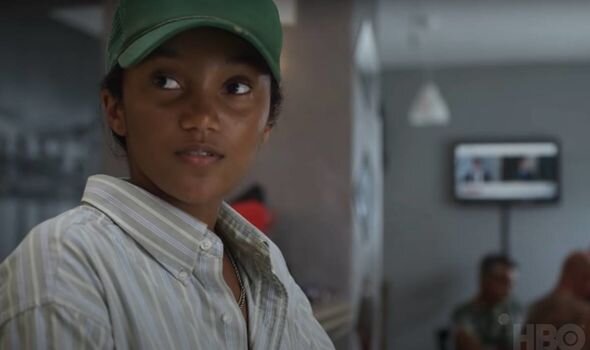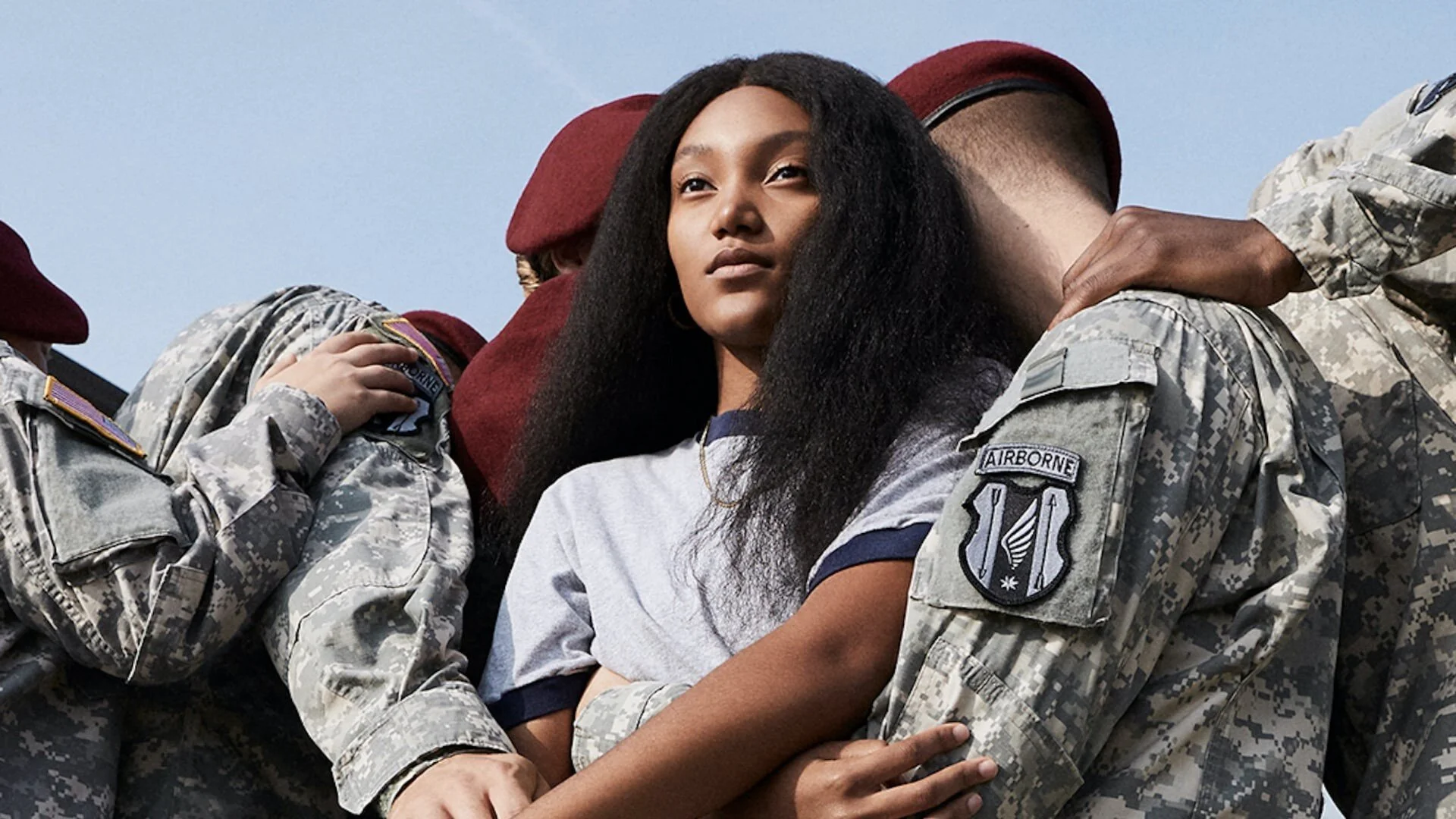We Are Who We Are: Season 1 Episode 2 "Right Here Right Now Pt. II" Recap & Review
After two episodes of “We Are Who We Are”, my mind keeps wandering to the made-up word “septembery” as a way to describe Luca Guadagnino’s series. From the flattened, breezy color palette to the budding relationships between our angsty kid protagonists, the film’s secluded military base milieu is colored with a let’s-skip-class laxity and characters seeking to fit in and stand out all at the same time. For these reasons, the show has a familiar September anticipation that occurs in baggy-clothed, explorative, hormonal teenagers; it's a feeling most have had the unfortunate pleasure of having. Guadagnino allows that feeling of beginning in a new environment to grow legs and wade through the shallow end. It was a pleasant enough feeling that I assumed would pool out from last week’s premiere to the eventual season finale. But after episode two, Guadagnino reveals his construction not to be a pond for gentle splashing, but a rolling stream-- still serene, but ever changing in exciting new directions.
WARNING: SPOILERS AHEAD
For a series that starts off with such a powerful feeling of discovery both in its writing and visual style, consistency is key. However, Guadagnino flips that notion on his head, keeping the same tone and characters, but no paying almost no attention to Fraser (Jack Dylan Grazer), instead bouncing into the point of view of another character, Caitlin (Jordan Kristine Seamon), who was dispersed intermittently through the first episode as Fraser’s white rabbit into the narrative. This time, the white rabbit gets to tell its own tale.
Existing parallel to episode one’s timeline, “Right Here Right Now II” (even a titular continuation of the premiere) opens with a silhouetted image of Caitlin floating atop a boat and wearing her dad’s oversized green clothes and flat brimmed hat. In the show’s premiere, we were first introduced to Caitlin as a more feminine presence, eventually revealing her male-presenting persona during the final scene. But, since her narrative is now in control, she can choose to introduce herself to audiences any way she pleases. As she delivers fresh water through the neighborhood, even the town’s residents believe her to be the “the boy with the tanks”. She plays with their assumptions of her gender for any other reason than why not--- they don’t know her.
Caitlin and her father Richard (Kid Cudi), return home to the family’s over protective mother, Jenny (Faith Alabi), and her dismissive brother, Danny (Spence Moore II). Their family dynamic is opposite of Fraser’s family-- less tremulous, but somehow less connected. At school, dressed in more feminine clothes, Caitlin recites the lines to a Walt Whitman poem, “I am he that aches with amorous love.” She is immediately interrupted by her teacher who prompts her to start again. This scene is even more indicative of Caitlin’s struggle with her non-binary identity.
After class, while at the beach with her friends (a scene that was played out in the first episode through Fraser’s POV), the complexities concerning her identity continue. In one of the series more explicit scenes (I’m sure there are more to come), after rejecting her boyfriend’s advances in the sand dunes, Caitlin goes into the ocean and comes back out experiencing her first menstruation. She immediately takes a moment to be by herself away from the group. It is a moment that is met with a surprising wonderment on her part, as she walks away with an expression of welcoming. When she is asked later what her name is, she responds “Harper.” Her interrogator retorts with, “Isn’t that a boy’s name?” She answers: “It’s a name for a lot of things.”
Halfway through the episode, what was a part-mumblecore, part-surrealist portrait for Caitlin’s journey is injected with something polarizingly unexpected: During a community screening of a baseball game, while in the process of telling her father (not her mother) about the events at the beach, the pair are interrupted by a political ad approved by none other than Donald J. Trump. It is an early 2016 campaign commercial praising the travel ban plan. Guadagnino plays the whole ad. The world seems to stop, and we as viewers are unsure as to what the response from Caitlin, her father, or the American military base crowd. The game continues, and the narrative of the episode carries on as if the ad were just a glitch in the matrix.
Later, the real world outside Guadagnino’s Italian coming of age wandering pops up once more. This time not through another Trump campaign ad, but in the form of two MAGA hats that Richard had ordered for himself and his daughter. And as the pair pridefully try on the scarlet letter caps in the mirror, it hits us that this narrative exists alongside the narrative of our world today. These explicitly political scenes concerning Americans abroad pull us back to the harsh realities of our world. It’s almost as if the director is wagging his finger at us: Wait a minute. You didn’t think it would be this easy. Now that the pitfalls of xenophobia have been placed, will these characters be able to navigate their identities? How will our protagonists’ parents align? How far will the show go? In a series already filled with slight avant garde moments, why is it that the most surreal moments in the show are ones that actually happened?
The story presses forward, its audiences with the knowledge that the show takes place in an era around 2016, As Caitlin, dressed in her dad’s clothes, goes around town interacting with residents as “Harper” (and even receiving a local girl’s phone number), she runs into Fraser, who tells her, “The stuff you wear is inappropriate for what you wanna do.” And what is it that Caitlin wants to do? If we don’t know, then certainly Fraser will spill the beans eventually. She tells Fraser to leave her alone. His response? To send her a package later that night. But instead of opening it immediately, she sneaks out with her friends to zipline using military equipment. Her soldier friend even gives her permission: “All you gotta do is let yourself go.”
The next morning, during the final scene of the episode, she decides to open Fraser’s package. Inside is a bag with his clothes; an olive branch in the shape of a striped polo shirt and loose fitting pants; a new look for Caitlin, for Harper, for whoever she decides to be. Fraser, living in the neighboring house, sees Caitlin open the package from his window and put on the clothes. Olive branch accepted; these two stories are now one. This act by Fraser furthers the notion that wardrobe, whether it be masculine, feminine, camouflaged, or embroidered with “Make America Great Again'' plays a substantial role in the development of these characters and the series.
Caitlin’s story is an equally important melody that plays concurrently with Fraser’s. It feels like another strand of the show’s DNA helix or another color to implement into the larger picture. Although the series’ endgame isn’t completely transparent, with the second episode’s bold switch in character, we have a better idea as to how the rest of the series might function. Whatever may come next, the filmmaking, characters, and now politics of “We Are Who We Are” have me fascinated enough to stick around.



